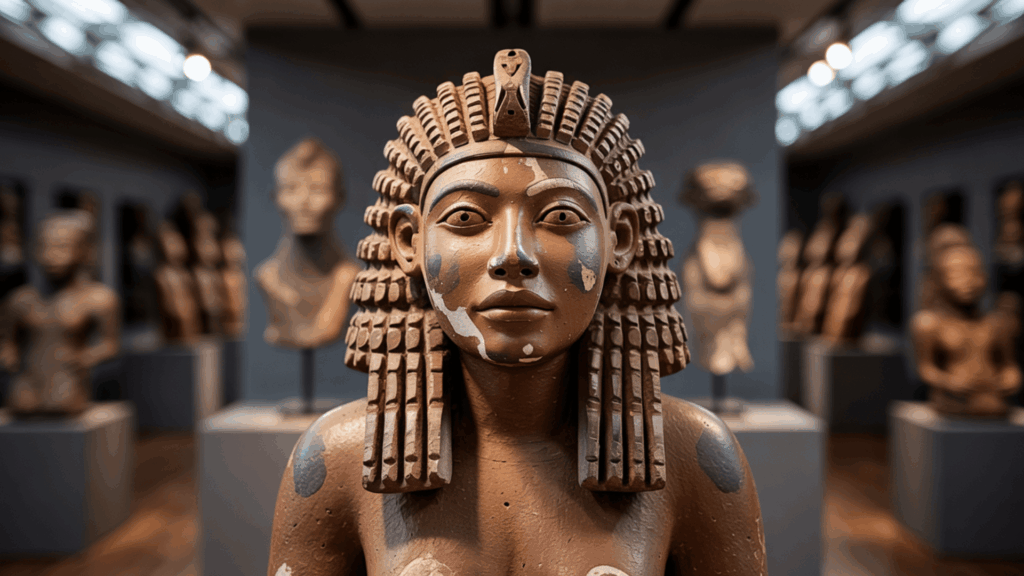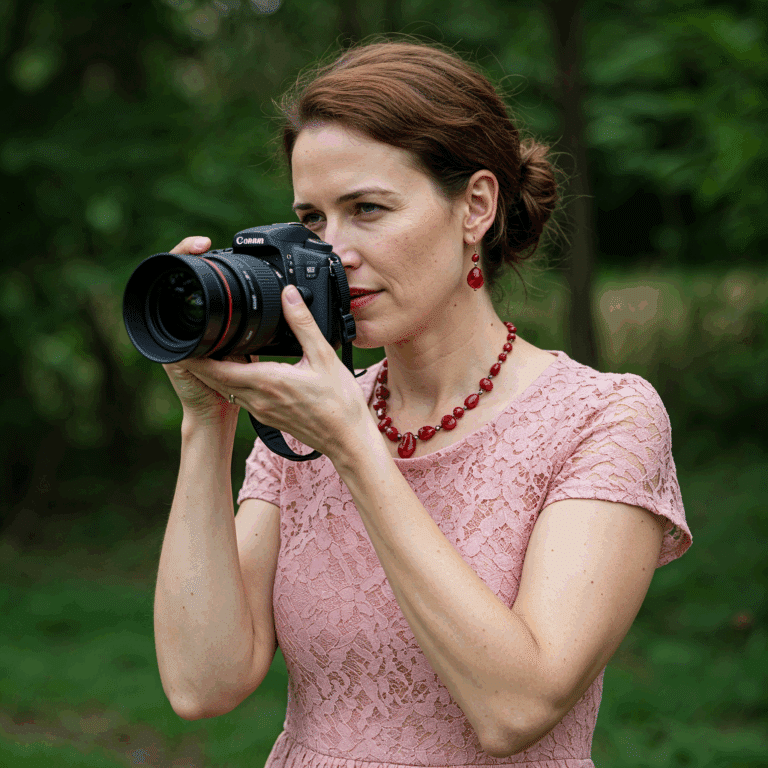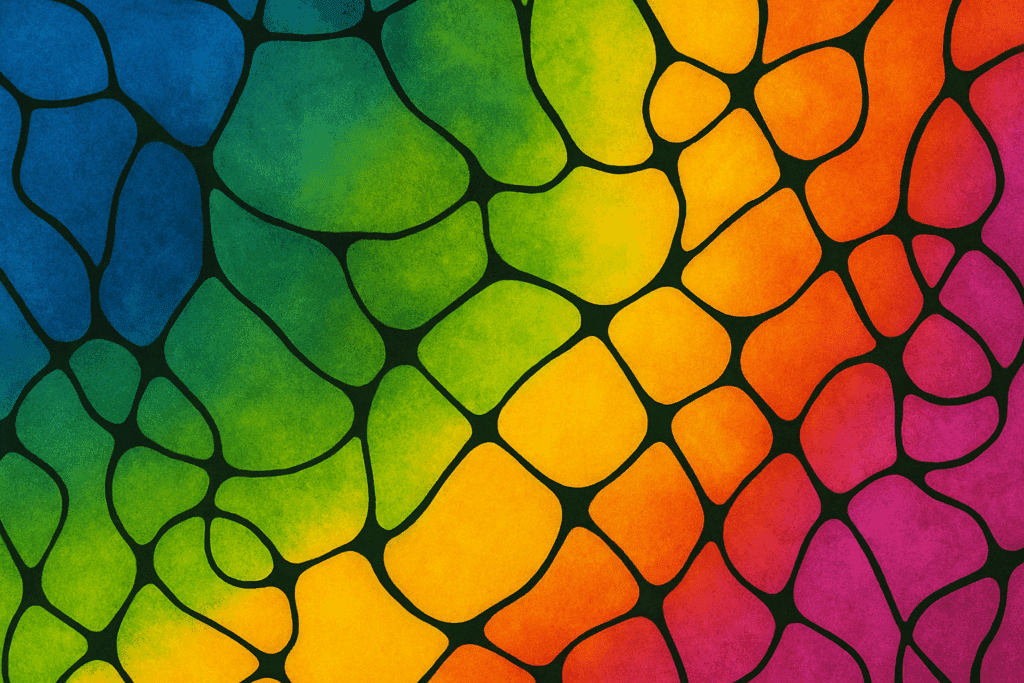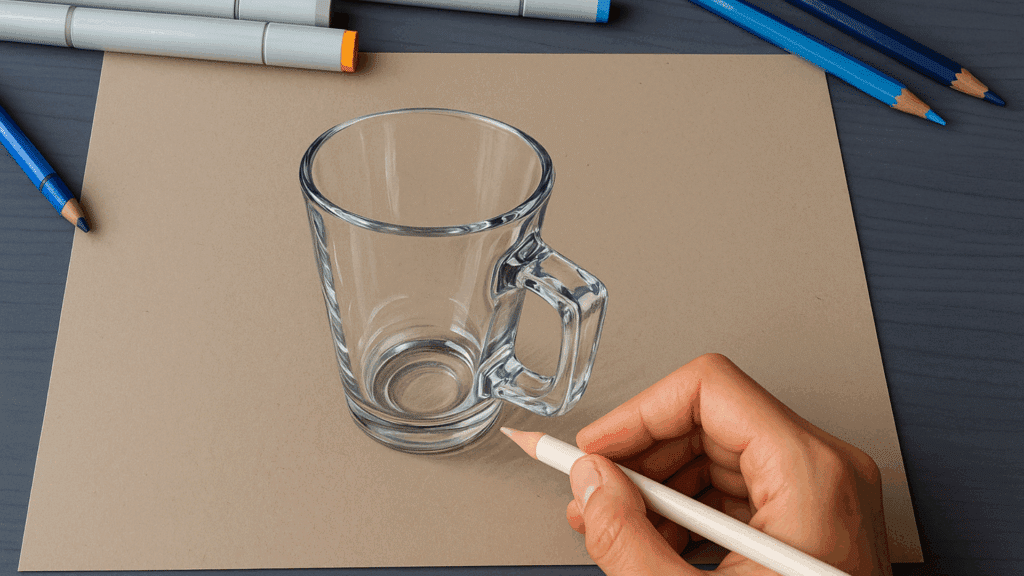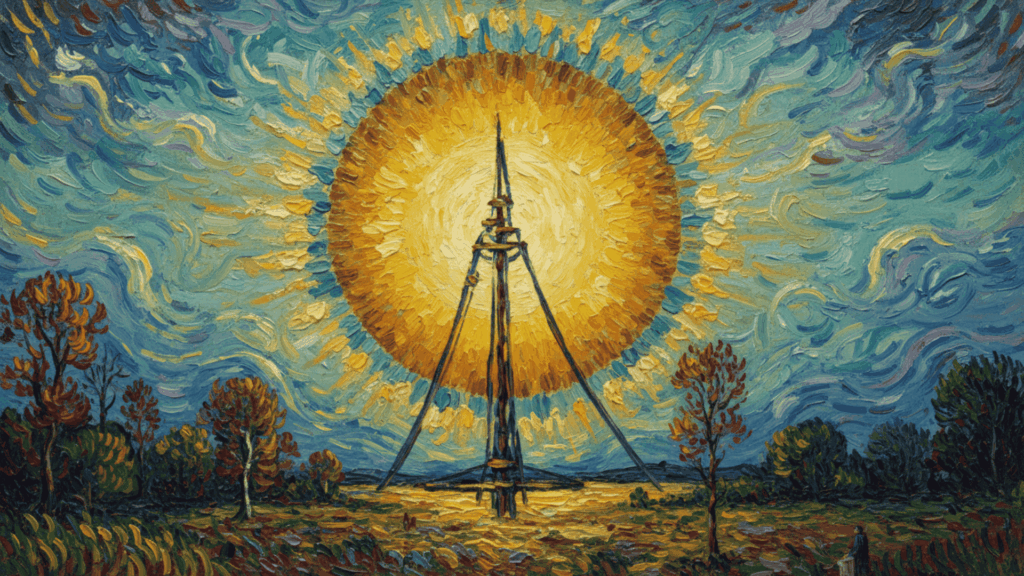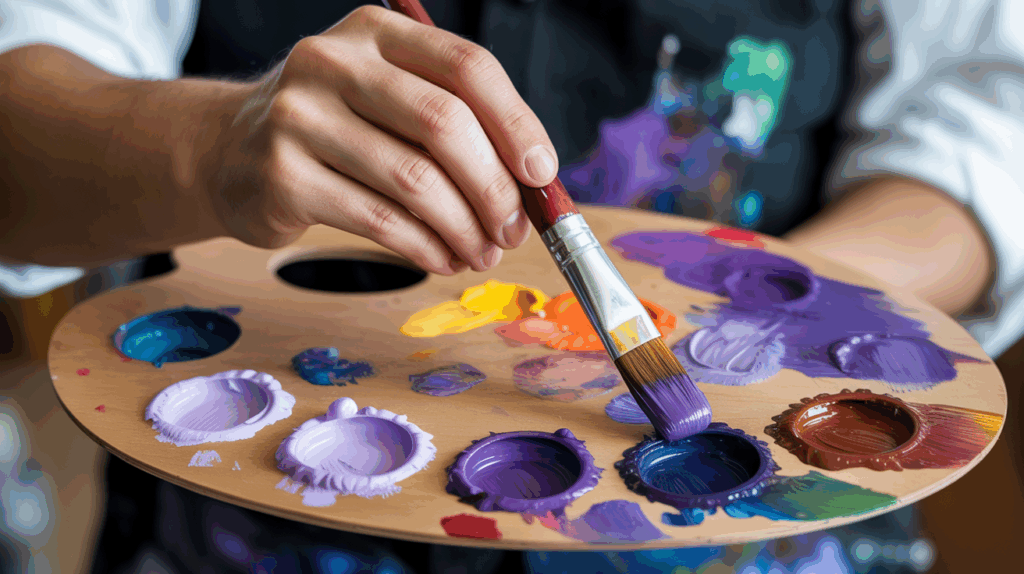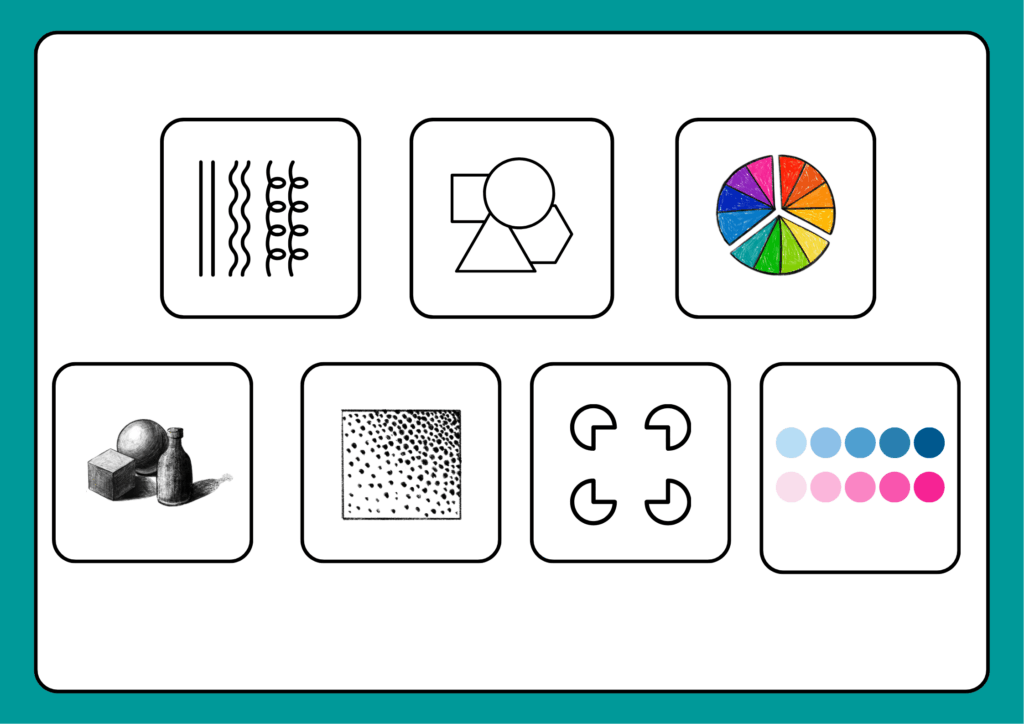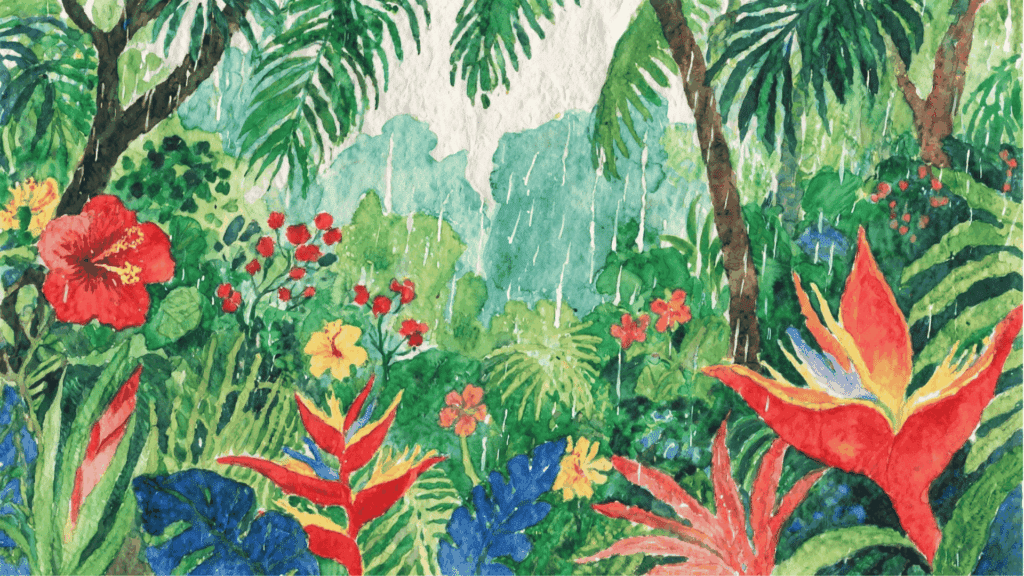Have you ever wondered where art really began?
Africa has the oldest artistic traditions, with over 25,000 years of creativity, from Saharan cave paintings to modern sculptures.
While other continents were just beginning, African artists had already created art that told stories, honored ancestors, and fostered spiritual connections.
The oldest known jewelry in the world comes from Africa! Ancient beads made from ostrich eggshells found in Algeria are over 40,000 years old, which is older than the pyramids!
Get ready to uncover how African creativity changed the world, one masterpiece at a time!
The Birth of African Art: Prehistoric Origins (500 BCE – 1000 CE)
Africa is home to ancient art treasures, including the Apollo 11 caves in Namibia, which feature 27,000-year-old painted stone slabs, among the earliest known artworks.
Ancient Africans made jewelry from ostrich eggshell beads and used pigments for body painting.
The Sahara Desert has thousands of rock paintings and carvings dating back around 6,000 years, when it was a green grassland with rivers and lakes.
Artists painted giraffes, elephants, cattle, and people on rock walls.
These images reveal how North Africa looked before climate change turned the fertile land into desert. Today, these artworks help scientists understand early African life and the region’s native animals.
Ancient Period: Foundations of African Artistic Civilization (500 BCE – 1000 CE)
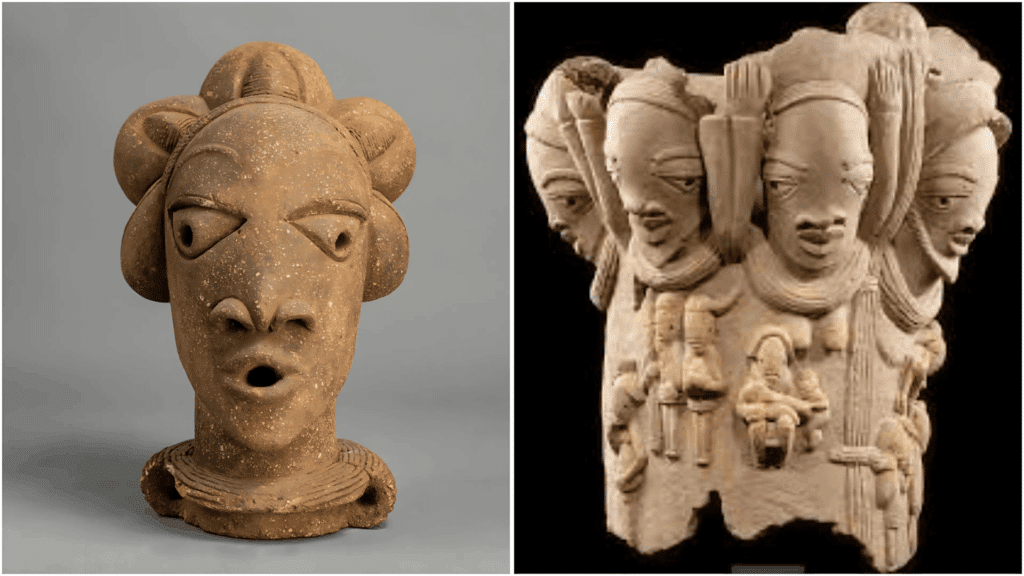
During Africa’s ancient period, amazing artistic traditions began across the continent.
The Nok people of Nigeria created the first large clay sculptures in sub-Saharan Africa, utilizing advanced techniques such as coil-building and carving.
Their figures had triangle-shaped eyes and elaborate hairstyles, often used in burial ceremonies to protect the deceased.
Other regions developed their own art styles. In Sudan, the Kingdom of Kush combined Egyptian and African ideas. East African artists carved pictures into rocks near Lake Turkana. Sokoto also produced beautiful sculptures.
These early artists worked with clay, stone, and metal during the Iron Age. Their creations weren’t just decorations; they had important religious and cultural meanings that connected communities to their ancestors and spirits.
Medieval Period: Golden Age of African Empires (1000 CE – 1600 CE)
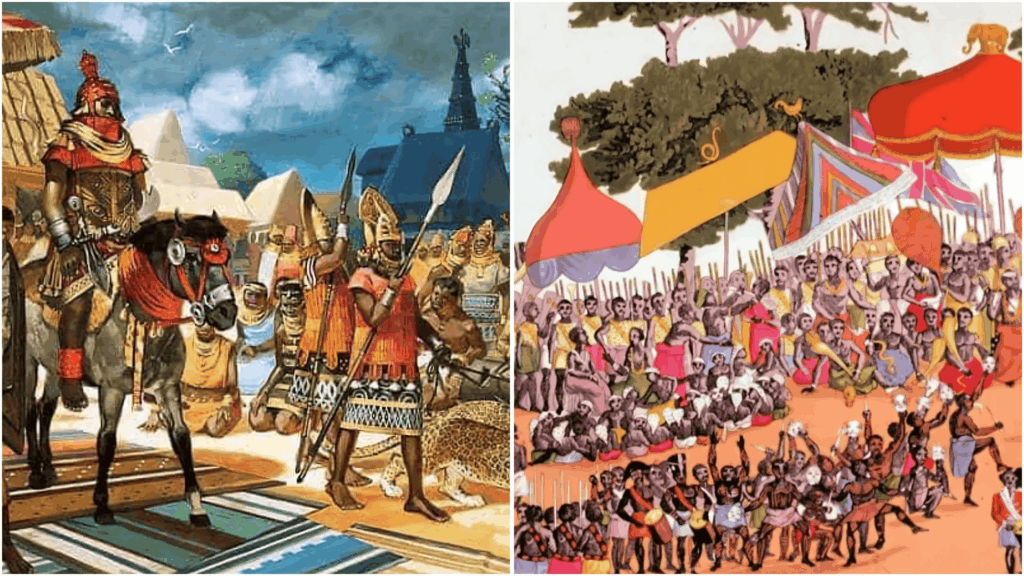
Africa’s medieval period was a golden age, marked by powerful empires that created stunning art and architecture.
The Ghana, Mali, and Songhai empires controlled trade routes, bringing wealth and artistic ideas. Mansa Musa’s Mali Empire was renowned for its riches and culture.
Islamic influences transformed African art. Artists built grand adobe mosques, such as the Great Mosque in Djenne. Timbuktu became a learning hub with scholars creating beautiful manuscripts with decorative writing.
Great Zimbabwe’s large stone walls showed advanced skills. Trade brought Chinese pottery and Arabian glass, inspiring local artists.
Art served religious, royal, and everyday purposes. Rural traditions mixed with Islamic urban styles, creating a unique African art for centuries.
Colonial Period: Disruption and Transformation (1600 CE – 1960 CE)
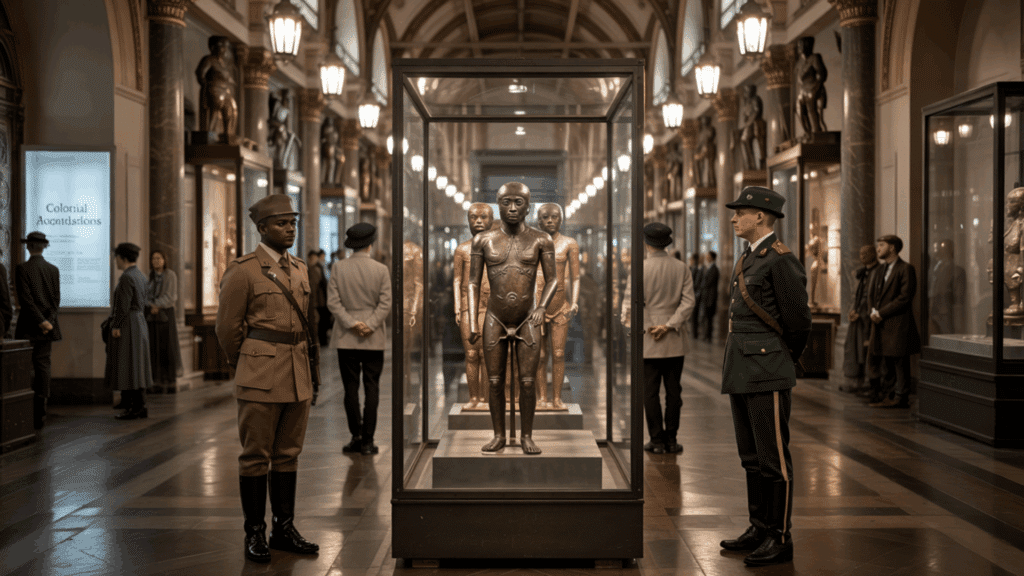
European colonialism had a profound impact on African art, beginning in the late 1800s.
Colonial rulers banned traditional art and stole thousands of sculptures, including the Benin Bronzes, which were taken to European museums.
Europeans introduced new styles, such as easel painting and photography, through colonial schools, replacing community-based learning. Art shifted from religious and cultural roles to being sold commercially at low prices.
Despite these challenges, African artists began creating modern styles. Pioneers like Ben Enwonwu mixed traditional African techniques with European methods.
The Negritude movement in Paris celebrated African culture. Some artists used their work to protest colonial rule, creating powerful images about freedom and resistance.
Early Modern Period: Independence and Renaissance (1945 – 1980)
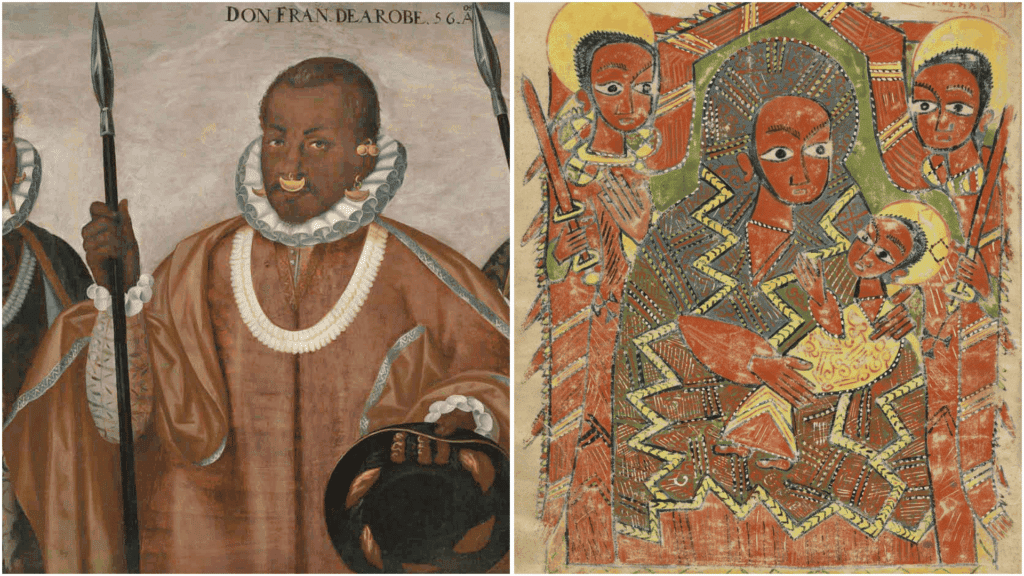
After gaining independence, African nations experienced a cultural and artistic revival.
Artists who had studied abroad returned home excited to create new works that celebrated their heritage. Despite the colonial damage, strong artistic traditions survived and began to flourish again.
African art influenced famous European artists like Picasso and Matisse in the early 1900s. African sculptures inspired movements such as Cubism and Expressionism. The Harlem Renaissance also drew from African styles.
Western museums and critics in the 1950s dismissed African art as “primitive” and treated sculptures as artifacts rather than art.
Over time, attitudes shifted as people recognized the skill, creativity, and cultural importance of African traditions.
Contemporary Period: Global Recognition and Innovation (1980 – Present)
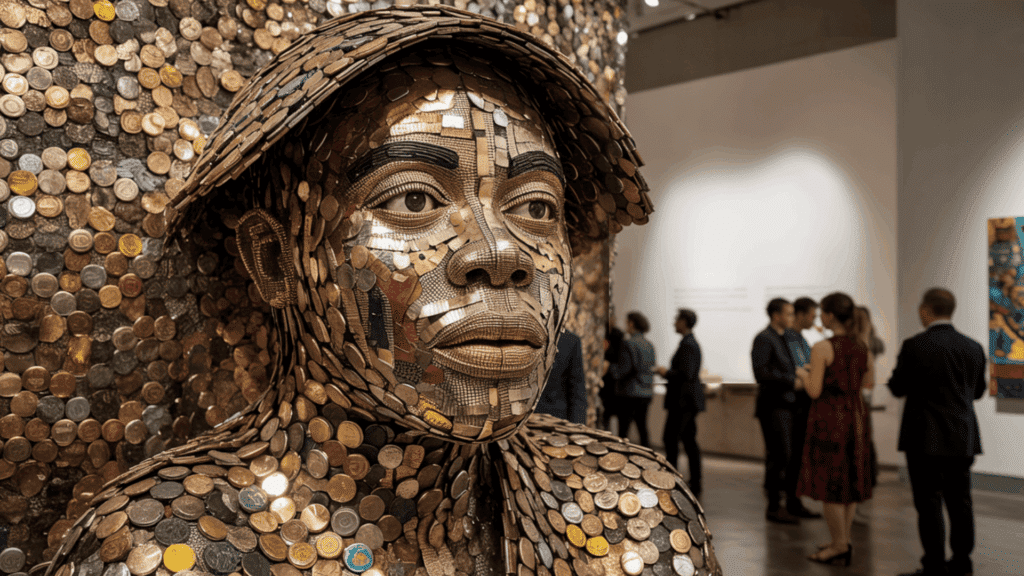
Since the 1980s, African artists have gained worldwide recognition.
The 1989 “Magiciens de la terre” exhibition in Paris marked a significant breakthrough, showcasing African art alongside that of renowned international artists. Today, African artists frequently participate in major events, such as the Venice Biennale.
Contemporary African artists explore themes like identity, migration, and globalization. El Anatsui makes sculptures from recycled bottle caps and scraps. Afrofuturism envisions bright African futures via art, film, and tech.
Modern African artists blend traditional painting techniques with digital media, incorporating ancient symbols into modern art forms.
Sotheby’s sells African contemporary art for high prices. Traveling exhibitions showcase African creativity globally, highlighting ongoing evolution while honoring heritage.
Artistic Characteristics Across All Periods
African art has maintained consistency over thousands of years, evolving with new materials and ideas. From ancient rock paintings to digital art, core principles remain central to African artistic expression.
| PERIOD | MATERIALS & TECHNIQUES | MAIN FUNCTIONS | KEY CHARACTERISTICS |
|---|---|---|---|
| Prehistoric | Pigments, shells, and stone carving | Spiritual rituals, ancestor communication | Abstract symbols, animal subjects |
| Ancient | Terracotta, iron, bronze | Religious ceremonies, burial protection | Human figures, triangular eyes |
| Medieval | Adobe architecture, Islamic calligraphy | Royal power, Islamic faith celebration | Geometric patterns, mosque design |
| Colonial | Oil paints, photography (introduced) | Resistance themes, cultural preservation | Mixed traditional and Western styles |
| Contemporary | Recycled materials, digital media | Social commentary, global dialogue | Environmental themes, identity exploration |
Throughout all periods, African artists emphasize creativity over strict realism, using visual abstraction and symbolism. The human form remains central, linking past and present traditions meaningfully.
Ongoing Challenges and Future Directions
By honoring its roots and embracing new voices, African art continues to inspire, educate, and shape the cultural story of tomorrow.
Key Challenges and Progress:
- Artifact Return Movement: Countries are demanding that stolen treasures like the Benin Bronzes be returned from European museums, with some institutions finally agreeing to repatriate these cultural treasures.
- Fighting Art Theft: Illegal digging and smuggling of ancient African artworks continues, but international cooperation is improving to stop these crimes and protect archaeological sites.
- Educational Reform: Schools are slowly replacing colonial-era teaching methods that ignored African art history, instead incorporating traditional African artistic knowledge into modern curricula.
- Research Renaissance: More archaeologists and art historians are studying African art seriously, leading to exciting new discoveries about ancient civilizations and artistic techniques.
- Global Recognition: The importance of African art is finally being acknowledged worldwide, influencing contemporary artists and highlighting its crucial role in human creative development.
Preserving and celebrating African art ensures its legacy endures, reminding the world of its timeless beauty, wisdom, and cultural power.
The Last Frame
From cave paintings to digital art, African artists show that art does more than decorate; it tells stories, unites people, and transforms perceptions.
From rhythm to pattern, African art has sparked movements worldwide, proving its influence is as timeless as it is transformative.
Modern African art bridges past and present,honoring tradition while boldly shaping the future of global creativity and cultural pride.
Ready to Join the Story? African art’s future is bright, and you can help write the next chapter!

